Mount St. Helens is a legendary volcano in the Pacific Northwest that has been erupting for decades. Currently, the volcano has not erupted since 2008. But it is still the most active volcano in the United States and remains a threat to erupt. Therefore, the element of danger is always there.
There are many cool facts to know about Mount St. Helens and how much of an impact it has had on the country. Ultimately, it has been around for so long, and there have been new and intriguing facts about the volcano, and it keeps evolving.
Here are 10 mind-blowing facts about Mount St. Helens that you probably did not know about that will give you more clarity about the volcano. Additionally, we will share some of the stories behind these facts so you fully understand them.
10. Captain George Vancouver Blessed the Volcano With a Name
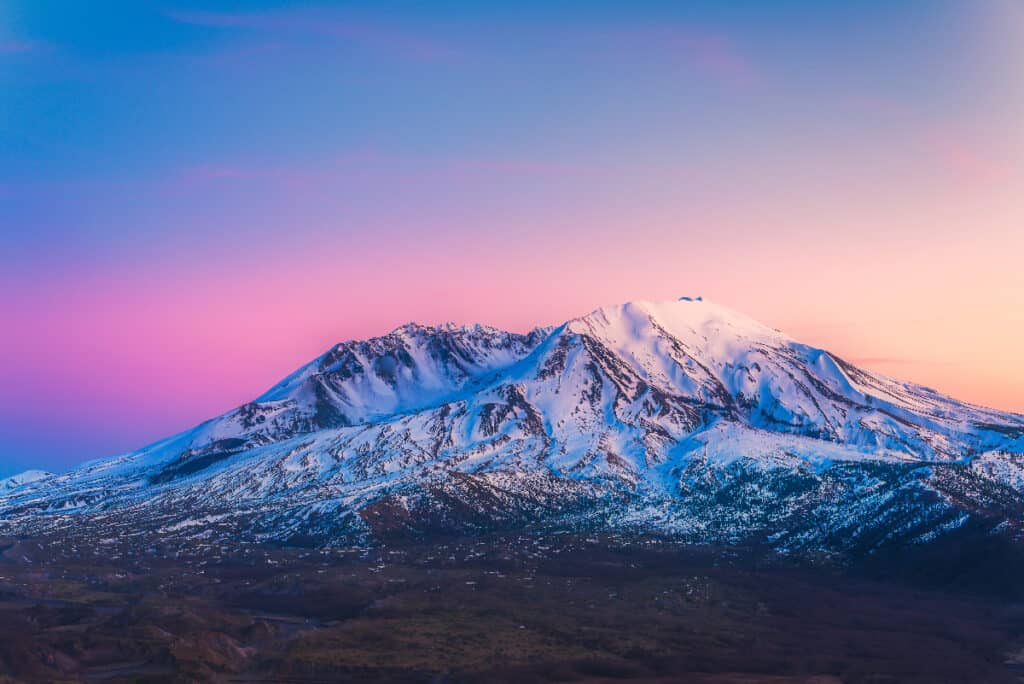
The legendary volcano got its name from Captain George Vancouver, who named it after a British diplomat.
©Checubus/Shutterstock.com
Captain George Vancouver was a British explorer who visited the continent of North America in the part that is now known as Canada. Also, he had visited present-day Washington. Vancouver named many popular Pacific Northwest spots, including Mount St. Helens, Mount Baker, Puget Sound, Mount Rainer, Port Gardner, Port Susan, Whidbey Island, and Discovery Passage, after his friends and officers.
Native Americans called the mountain ‘lawilatla’ which translates to “when smoke comes.” Furthermore, it currently sits as Lawetlat’la in the National Register of Historic Places.
Vancouver would one day have his name become a popular city in Canada. Overall, it is not difficult to see the impact of his exploration, especially on Mount St. Helens. It is one of the most mind-blowing facts that you will ever learn about the volcano.
9. Majority of the Volcano is Younger Than 3,000 Years Old
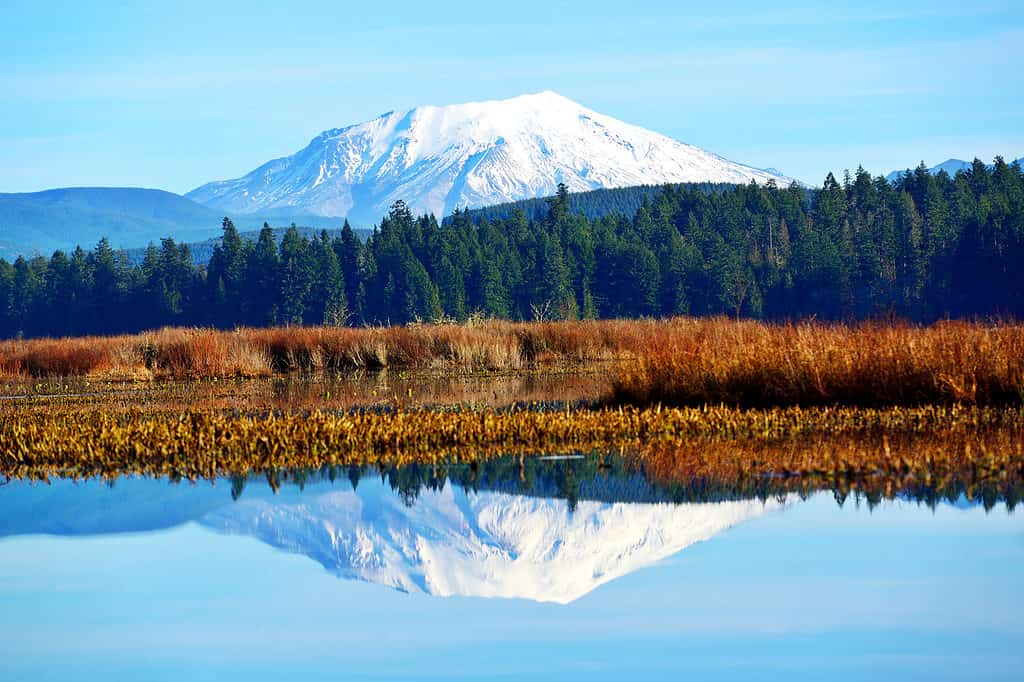
The majority of the volcano is less than 3,000 years old.
©Nadia Yong/Shutterstock.com
Just because Vancouver named the volcano does not mean that it was not around. Allegedly, Mount St. Helens has been around for about 40,000 years, according to the United States Geographical Survey. There were allegedly numerous dormant intervals over a 15,000-year period. Thus, it is a lot older than many believe. But a good majority of the volcano is younger than 3,000 years old. Therefore, the most active volcano is still relatively young compared to other volcanoes.
The changes in the rock types began around 2,500 years ago. Since then, the volcano has continuously evolved into something different than what it originally was 10,000 years ago. It is just another of the mind-blowing facts about Mount St. Helens that will pique your curiosity.
8. The 1980 Eruption Created a Vast Landscape
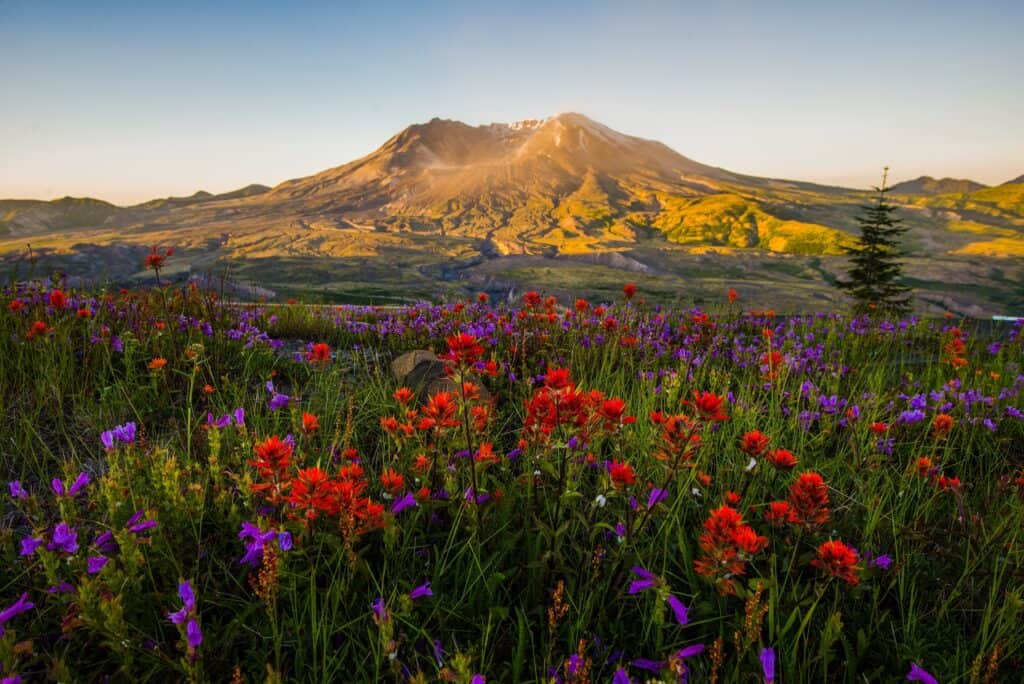
There are more flowers and floral diversity around the volcano than ever before, and it is a direct result of the 1980 eruption.
©Dene’ Miles/Shutterstock.com
There was plenty of destruction after the eruption in 1980. Yet, there has been a rebirth of the floral diversity around the volcano since the event. Flowers and other plants that might have perished when the volcano erupted have returned, with many newer plants taking form in the area around Mount St. Helens.
There were also other traces of life that survived the initial eruption. Remarkably, some animals, such as gophers, survived the eruption by digging below the Earth. Seeds, spores, and fungi also managed to survive the blast, as all were beneath the debris of the volcano. Additionally, flora and fauna that were situated just outside the destructive path of the eruption managed to survive, which helped bring the floral diversity back.
It is remarkable that any floral diversity returned after such a destructive event. Regardless, the area around Mount St. Helens has made a comeback. It is another of the mind-blowing facts about Mount St. Helens that will amaze you.
7. Crater Glacier is The Youngest Glacier on Earth
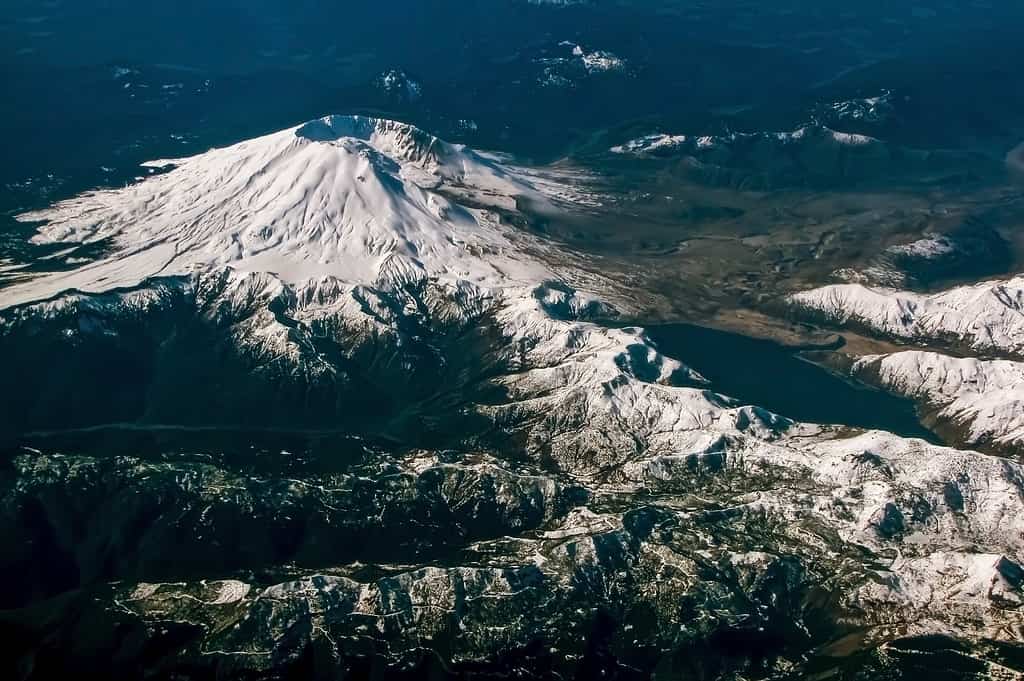
Crater Glacier is the youngest glacier on the planet and formed after the 1980 eruption.
©Erin Donalson / via Getty Images
Mount St. Helens has had many glaciers since its inception. However, Crater Glacier is the youngest glacier on the planet after it began to form after the 1980 eruption at Mount St. Helens. Crater Glacier formed out of a combination of rock debris, avalanche snow, and annual snowfall. Ultimately, it made the snow thick between the period of 1980 and 1986.
Crater Glacier did not officially get its name until 2006 when it survived the 2004 eruption. Amazingly, it still stands to this day and continues to evolve and change with the Earth.
6. Mount St Helens Erupted Continuously from 2004 to 2008

There was a four-year period from 2004 to 2008 when Mount Helens erupted regularly.
©Wirestock/ via Getty Images
Speaking of the 2004 eruption, that was a continuous eruption that somehow lasted four years. While it did not have the same destructive devastation as the 1980 eruption, it still presented a clear threat to the areas around the volcano.
When that eruption was underway, the lava domes split down the middle into Crater Glacier in the eastern and western lobes. Then, the ice lobes traveled down the volcano at a speed of six feet per day and would end up below the lava dome after about 3.5 years.
Scientists and experts closely monitored the volcano during this four-year period. Ultimately, it did not have the same effect as the 1980 eruption. But it still did provide a scare into areas around the volcano as a reminder that Mount St. Helens was still a force to be reckoned with.
5. The Mount St Helens Eruption in 1980 Spread Incredibly Far

The 1980 eruption caused mass devastation, and some of the ash spread as far as the middle of the United States.
©Bob Pool/Shutterstock.com
When Mount St. Helens erupted in 1980, no one had anticipated just how much destruction it would cause. However, the ash cloud from the eruption spread to the middle of the United States. People could allegedly see the ash plume from Minnesota and Oklahoma. Amazingly, some of the ash plumes spread around the world.
As the volcano erupted, over 540,000,000 tons of ash descended upon an area covering 22,000 square miles. Therefore, people felt the impact of the 1980 eruption from many miles away. It is one of the most boggling, mind-blowing facts about Mount St. Helens you can learn.
4. Mount St. Helens Elevated After The 1980 Eruption
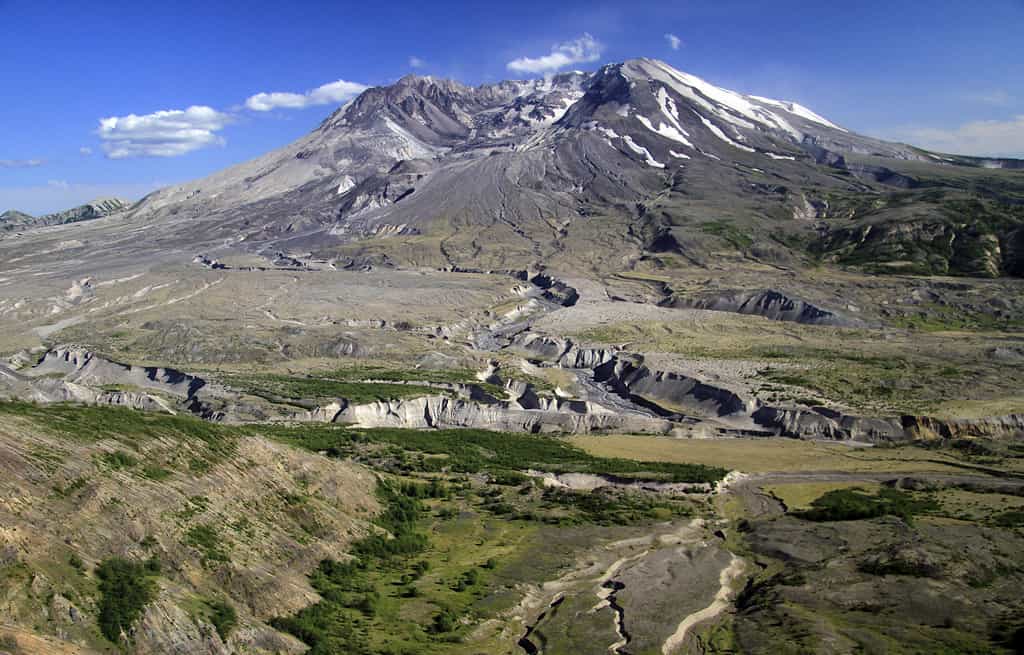
Mount St. Helens has elevated in height since the eruption in 1980.
©453544653/ via Getty Images
The summit altitude of Mount St. Helens was approximately 9,677 feet before 1980, and it was the fifth-highest peak in the state. However, since the volcano erupted that year, it rose 5,000 feet above its original base.
But then Mount St. Helens lost about 3.4 billion cubic yards in the aftermath. From that point on, the highest part of the rim stood at 8,365 feet. Amazingly, it gained altitude in the immediate aftermath before dramatically losing it all back. It is one of the more amazing, mind-blowing facts about Mount St. Helens that gives you a little more information on how volcanoes operate.
3. Similar Lava Craters in All Four Recent Blasts
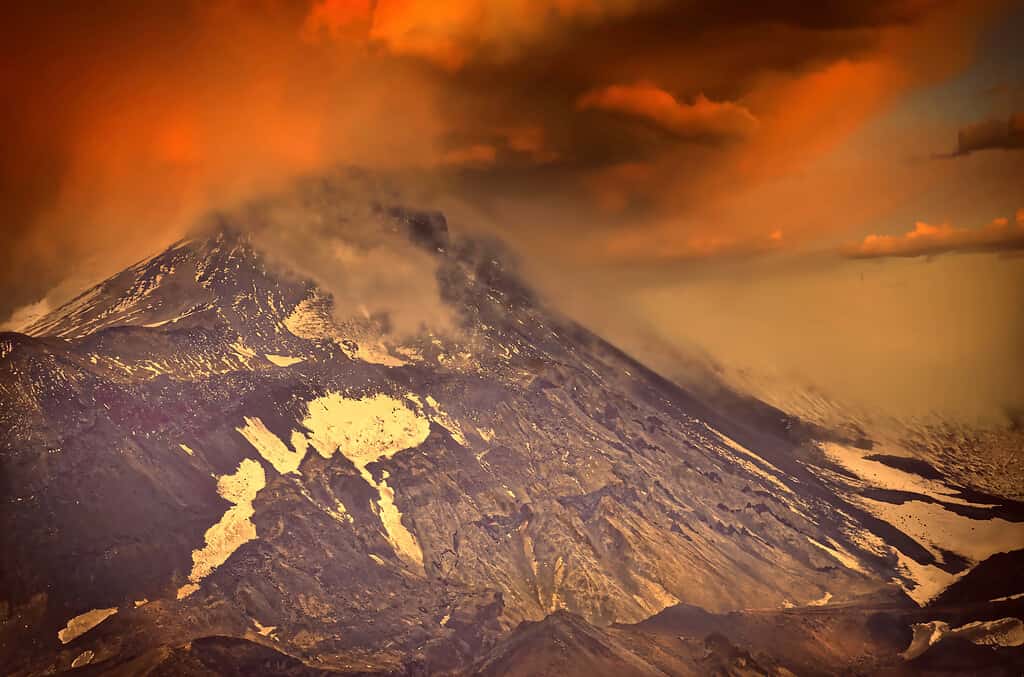
There were similar lava domes created through the most four recent blasts.
©Camboy Production/ via Getty Images
There have been similar lava domes that formed after each of the last few blasts. Initially, the period from 1980 to 1986 saw 17 different episodes where lava eruptions started to fill the crater. It created a lava dome that extended almost 900 feet over the crater floor.
The eruption from 2004 to 2008 also saw similarities. This time, as highlighted before, the lava split down the middle and broke Crater Glacier into different lobes.
The similarities between the two lava domes and how they traveled down the mountain created intrigue. Moreover, it gave an idea of what could happen in the event of the next eruption, especially as Crater Glacier continues to evolve.
2. Most Destructive Volcano Event in Human History
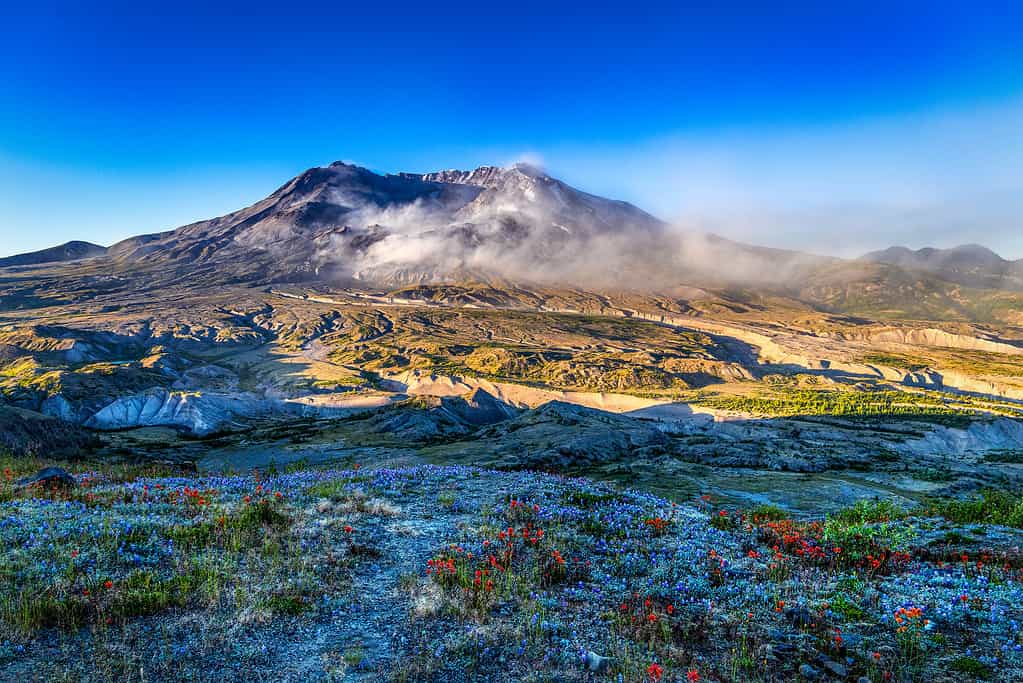
When Mount. St. Helens erupted in 1980; it became the most costly and destructive eruption in American history.
©Wirestock/ via Getty Images
The eruption in 1980 was the most destructive volcano event in the history of the United States. Ultimately, we already mentioned the ash plumes that spread. But there was a toll that was far worse. Unfortunately, it affected humans and wildlife in a significant way.
There were 57 lives that perished as a direct result of the 1980 eruption. Additionally, the eruption destroyed 200 houses, 47 bridges, and 15 miles of train rails. It also destroyed about 185 miles of highway. Unfortunately, two of the deaths were due to poor visibility on the highway, which resulted in car accidents. Two people sustained heart attacks while shoveling ash. Approximately 1,500 elk died in the aftermath of the eruption, while 5,000 deer perished.
Mudslides from the eruption caused massive devastation, including destruction of crops and plants. These destroyed crops included wheat, potatoes, and apples. Magnificently, the power of the eruption did not leave any traces and took everything in its path.
1. It Has Erupted More Than Any Volcano in the Cascade Range Over 4,000 Years

Mount St. Helens has had more eruptions than any volcano across the Cascade Range over 4,000 years.
©Corey Ford/ via Getty Images
There have been many eruptions in the Cascades over the past 4,000 years. Amazingly, Mount St. Helens has presented itself as a more dangerous volcano than Mount Reiner, even though the latter is bigger and more imposing. But Mount Rainer has not had a large-scale eruption in about 500 years.
While there have been many little eruptions at Mount St. Helens, there have been four major eruptions over the last 5,000 years. Spectacularly, that stands out as the most eruptions in the history of the Cascade Range. Mount St. Helens also had various eruptions throughout the 1,700s and in a period from 1800 to 1857. But how does it compare to two other prominent volcanoes like Lassen Peak and Mount Hood?
Lassen Peak had its most major event beginning in 1914 with a series of explosions. Then, it resulted in a major eruption on May 21, 1915. It tapered off in 1917. Likewise, Mount Hood had a major explosion period in 1781 after 1,000 years of dormancy. It continued for another decade before it reverted back to dormancy. Allegedly, people reported minor activity from the volcano in the 1800s.
Summary of 10 Mind-Blowing Facts About Mount St. Helens
| Rank | Fun Fact |
|---|---|
| 1. | It Has Erupted More Than Any Volcano in the Cascade Range Over 4,000 Years |
| 2. | Most Destructive Volcano Event in Human History |
| 3. | Similar Lava Craters in All Four Recent Blasts |
| 4. | Mount St. Helens Elevated After The 1980 Eruption |
| 5. | The Mount St Helens Eruption in 1980 Spread Incredibly Far |
| 6. | Mount St. Helens Erupted Continuously from 2004 to 2008 |
| 7. | Crater Glacier is The Youngest Glacier on Earth |
| 8. | The 1980 Eruption Created a Vast Landscape |
| 9. | Majority of the Volcano is Younger Than 3,000 Years Old |
| 10. | Captain George Vancouver Blessed the Volcano With a Name |
The photo featured at the top of this post is © 4nadia/ via Getty Images
Thank you for reading! Have some feedback for us? Contact the AZ Animals editorial team.






